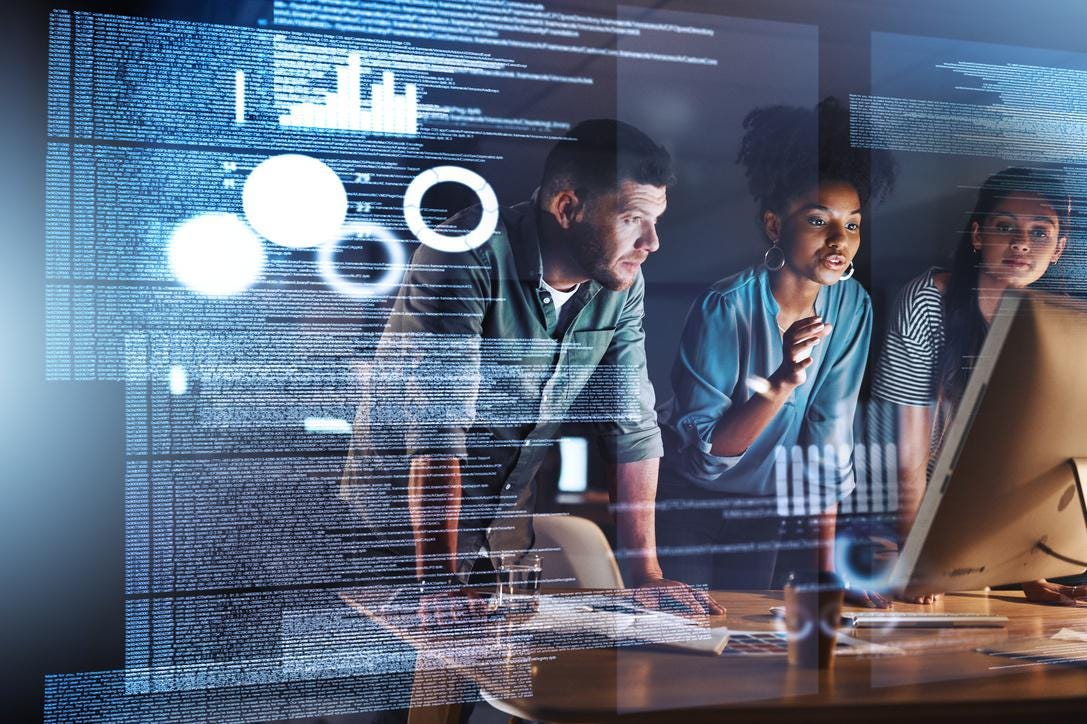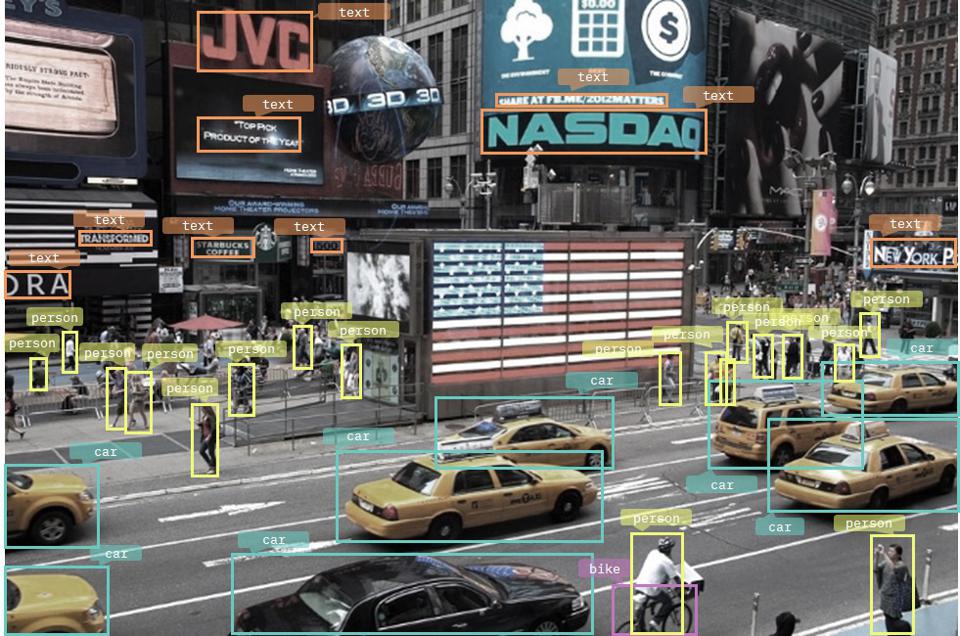
Computer vision simply means assembling visual pictures in the same manner as a jigsaw puzzle. A neural network needs to learn how to recognize pieces and determine subcomponents. These networks are fed hundreds of thousands images that are similar to the image being assembled. An image can only be reconstructed by a neural network if it has been trained on hundreds of thousands images that are similar.
Computer vision is an application
As more parts and connections are added to products, computer vision applications help in ensuring the correct placement of each component, which reduces the amount of manual inspection. They are useful in assembling machinery, equipment, boards and pre-assemblies. The speed of such processes is greatly reduced. Computer vision applications have grown in popularity. A lot of people use facial recognition technology to unlock smartphones.

Computer vision background
Computer Vision is a background field that was created in parallel with artificial intelligence. It began in late 1960s. Computer vision was initially developed for basic image processing tasks like edge detection and color segmentation. These early studies laid the foundation for current applications in computer vision. However, computer vision and AI were still years away from reaching the level that allows for reasoning. Researchers found that this task was extremely difficult and that the technology was still very early.
Convolutional neural networks (CNNs)
ConvNets have a similar architecture to neurons in the human mind. This was inspired largely by the organization of Visual Cortex. Each individual neuron is able to respond to a specific area of the visual field while receptive areas overlap to cover the entire field. Images can be mapped to pixel values and fed into a Multilevelperceptron.
Object detection
Object detection is the process of identifying effective targets in still images or video data. Computer vision techniques include image processing, pattern recognition, artificial intelligence, and machine learning. Object detection has broad applications, from factories to military restricted areas, and even advanced human-computer interaction. The complex task of object detection requires careful balance between accuracy and speed. This article will discuss recent advancements in object detection. Let's take a look at some of these techniques and their applications.

Computer vision automates labor-intensive processes
AI-powered computer vision has become a popular tool for helping businesses save time, money, and both. These tasks were once performed manually, usually by trained healthcare professionals. These tasks are being taken over by AI-powered computer Vision solutions. Examples of these applications include predictive maintenance systems, which detect and prevent machine and equipment breakdowns and alert human personnel of the likely time when maintenance needs to be performed. Moreover, computer vision is being used by workers in packaging and quality monitoring activities.
FAQ
How does AI impact the workplace?
It will change the way we work. We will be able automate repetitive jobs, allowing employees to focus on higher-value tasks.
It will improve customer service and help businesses deliver better products and services.
It will allow us to predict future trends and opportunities.
It will allow organizations to gain a competitive advantage over their competitors.
Companies that fail AI will suffer.
What's the future for AI?
Artificial intelligence (AI), the future of artificial Intelligence (AI), is not about building smarter machines than we are, but rather creating systems that learn from our experiences and improve over time.
In other words, we need to build machines that learn how to learn.
This would involve the creation of algorithms that could be taught to each other by using examples.
It is also possible to create our own learning algorithms.
Most importantly, they must be able to adapt to any situation.
Who is the leader in AI today?
Artificial Intelligence is a branch of computer science that studies the creation of intelligent machines capable of performing tasks normally performed by humans. It includes speech recognition and translation, visual perception, natural language process, reasoning, planning, learning and decision-making.
There are many types of artificial intelligence technologies available today, including machine learning and neural networks, expert system, evolutionary computing and genetic algorithms, as well as rule-based systems and case-based reasoning. Knowledge representation and ontology engineering are also included.
There has been much debate about whether or not AI can ever truly understand what humans are thinking. However, recent advancements in deep learning have made it possible to create programs that can perform specific tasks very well.
Google's DeepMind unit in AI software development is today one of the top developers. Demis Hassabis founded it in 2010, having been previously the head for neuroscience at University College London. DeepMind developed AlphaGo in 2014 to allow professional players to play Go.
How do you think AI will affect your job?
AI will eventually eliminate certain jobs. This includes jobs such as truck drivers, taxi drivers, cashiers, fast food workers, and even factory workers.
AI will lead to new job opportunities. This includes positions such as data scientists, project managers and product designers, as well as marketing specialists.
AI will make it easier to do current jobs. This includes jobs like accountants, lawyers, doctors, teachers, nurses, and engineers.
AI will improve efficiency in existing jobs. This includes jobs like salespeople, customer support representatives, and call center, agents.
Why is AI important
It is estimated that within 30 years, we will have trillions of devices connected to the internet. These devices will include everything, from fridges to cars. Internet of Things (IoT), which is the result of the interaction of billions of devices and internet, is what it all looks like. IoT devices are expected to communicate with each others and share data. They will also make decisions for themselves. A fridge might decide to order more milk based upon past consumption patterns.
According to some estimates, there will be 50 million IoT devices by 2025. This is a huge opportunity to businesses. However, it also raises many concerns about security and privacy.
How does AI work?
Understanding the basics of computing is essential to understand how AI works.
Computers save information in memory. Computers interpret coded programs to process information. The code tells computers what to do next.
An algorithm is a set or instructions that tells the computer how to accomplish a task. These algorithms are often written using code.
An algorithm can also be referred to as a recipe. A recipe can include ingredients and steps. Each step can be considered a separate instruction. For example, one instruction might read "add water into the pot" while another may read "heat pot until boiling."
Statistics
- That's as many of us that have been in that AI space would say, it's about 70 or 80 percent of the work. (finra.org)
- By using BrainBox AI, commercial buildings can reduce total energy costs by 25% and improves occupant comfort by 60%. (analyticsinsight.net)
- According to the company's website, more than 800 financial firms use AlphaSense, including some Fortune 500 corporations. (builtin.com)
- A 2021 Pew Research survey revealed that 37 percent of respondents who are more concerned than excited about AI had concerns including job loss, privacy, and AI's potential to “surpass human skills.” (builtin.com)
- The company's AI team trained an image recognition model to 85 percent accuracy using billions of public Instagram photos tagged with hashtags. (builtin.com)
External Links
How To
How to get Alexa to talk while charging
Alexa is Amazon's virtual assistant. She can answer your questions, provide information and play music. You can even have Alexa hear you in bed, without ever having to pick your phone up!
Alexa is your answer to all of your questions. All you have to do is say "Alexa" followed closely by a question. You'll get clear and understandable responses from Alexa in real time. Plus, Alexa will learn over time and become smarter, so you can ask her new questions and get different answers every time.
Other connected devices can be controlled as well, including lights, thermostats and locks.
Alexa can adjust the temperature or turn off the lights.
Setting up Alexa to Talk While Charging
-
Open Alexa App. Tap Settings.
-
Tap Advanced settings.
-
Select Speech Recognition
-
Select Yes, always listen.
-
Select Yes, you will only hear the word "wake"
-
Select Yes, and use the microphone.
-
Select No, do not use a mic.
-
Step 2. Set Up Your Voice Profile.
-
You can choose a name to represent your voice and then add a description.
-
Step 3. Test Your Setup.
Use the command "Alexa" to get started.
Ex: Alexa, good morning!
Alexa will answer your query if she understands it. Example: "Good Morning, John Smith."
If Alexa doesn't understand your request, she won't respond.
-
Step 4. Restart Alexa if Needed.
After these modifications are made, you can restart the device if required.
Notice: If you modify the speech recognition languages, you might need to restart the device.